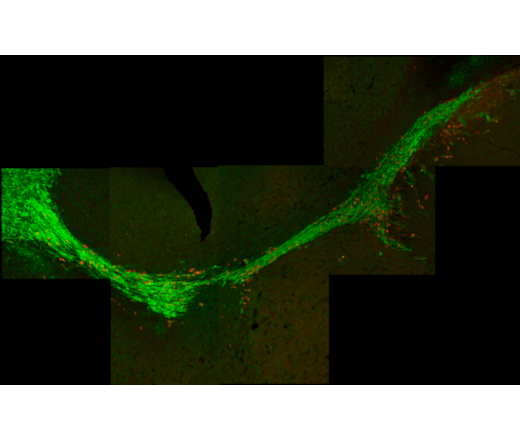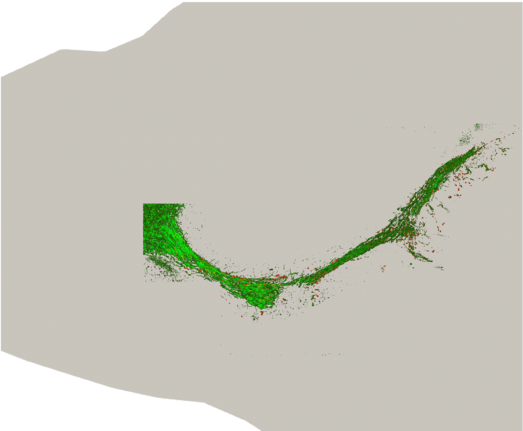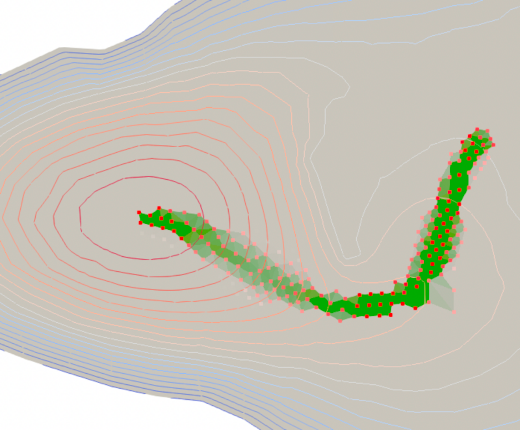Mathematical modeling, artificial intelligence and neurogenesis for brain repair

Figura 1
Original image, obtained from real data, showing neuroblast distribution (green & red) in a rodent brain.

Figura 2
Real neuroblast distribution (green & red), post-processed and integrated in the computational domain.

Figura 3
Density of neuroblasts (green & red): simulation generated by our preliminary OB_model. Isolines represent the OB chemoattraction.
About this project
Neurological diseases are the leading cause of disability and the second leading cause of death worldwide. The burden of this type of disease has increased substantially over the last 25 years due to the aging of the population. Adult brain neurogenesis is initiated in a specific area of the brain with the production of neuroblasts, a particular type of cells that become mature neurons while following their natural path to the olfactory bulb. In this framework, migration of neuroblasts play an important role in brain injuries repair. The natural migration of these cells is affected by the appearance of lesions in the brain which produce chemotactic signals attracting neuroblasts. The main purpose of the project will be to use mathematical modelization and artificial intelligence along with real data in order to create a digital twin of the brain that can describe, by means of numerical simulations, the migration of neuroblasts and the possible effects of pharmaceuticals to shed light on brain injury repair.